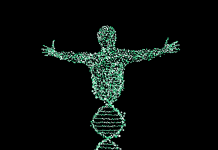Quantum computing has been talked about for years but the past few months have seen a spate of developments that have the potential to transform our lives. Researchers at Waterloo University recently made a breakthrough in quantum computing by building a system that can solve problems so quickly they have never been done before. This new method is based on a quantum theory that is able to achieve answers in one-fiftieth of the time it takes conventional computers, which means it could crack some of these encryption codes we’ve all grown used to seeing scrambled over our credit cards.
Recent Breakthroughs in Quantum Computing
1. Discovery of “quantum bits” (qubits)
The computing power of quantum computers has been greatly boosted with the discovery that “quantum bits” (qubits) can be made from atoms instead of the conventional electronic bits. This means that a single quantum computer could do the work of a large number of current computers, and therefore solve many more problems.
Quantum computing has also been confirmed for practical use since Keiko Yakouta at the University of Oxford confirmed a proof of principle: two photons are designed to interact with each other, creating an entanglement between them. If one is then measured it is found to be entangled with a photon sent later in time by someone else, proving that it is possible to build a quantum network linking devices together like this in real life. Quantum computers may finally be here since IBM has announced its own breakthrough, after it successfully built and tested several atomic-scale qubits for its new quantum computing microprocessor. This chip is 10 times faster than anything currently on the market, and can be shrunk down to just five nanometres in size – meaning it could eventually be used in products like PCs, smartphones, or even wrist watches we are told. Forbes reports that researchers at the University of Maryland were also able to build a qubit that can last up to 100 microseconds without losing any information, which is double the record. This makes quantum computing work on a practical level.
2. Creation of a quantum computer
Perhaps the greatest breakthrough of recent is that scientists have been able to take a step towards the creation of a quantum computer that can do more than one task at once (known as a “quantum annealer”.) A paper published by researchers in Switzerland led by physicist Matthias Troyer confirmed that it is possible to build an annealer using a quantum computer which solves complex optimization problems (see quantum news). And according to PhysOrg, Google is building its own quantum computer using superconducting circuits and photons in an effort called ‘Project Q’. The aim of this project is to pave the way for creating useful applications for quantum computers by initially focusing on research such as machine learning. They will then move onto developing more general applications such as optimisation problems. Another milestone was reached when a team of physicists from University College London built a quantum computer from four atoms (one carbon and three ytterbium ions) that can perform operations on two distinct sets of qubits at the same time.



















